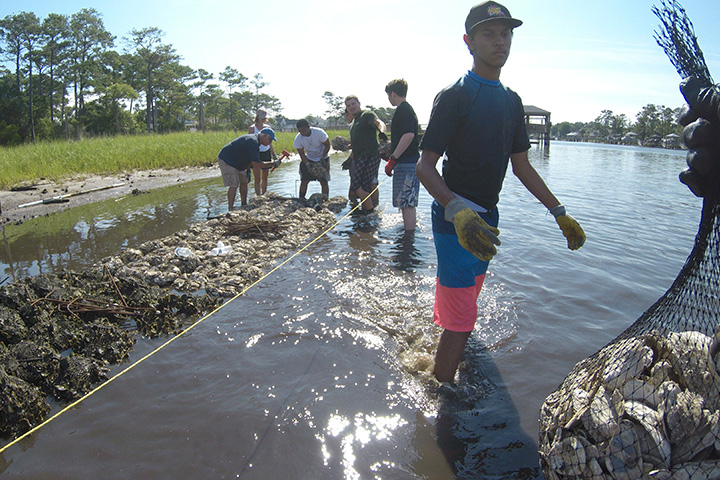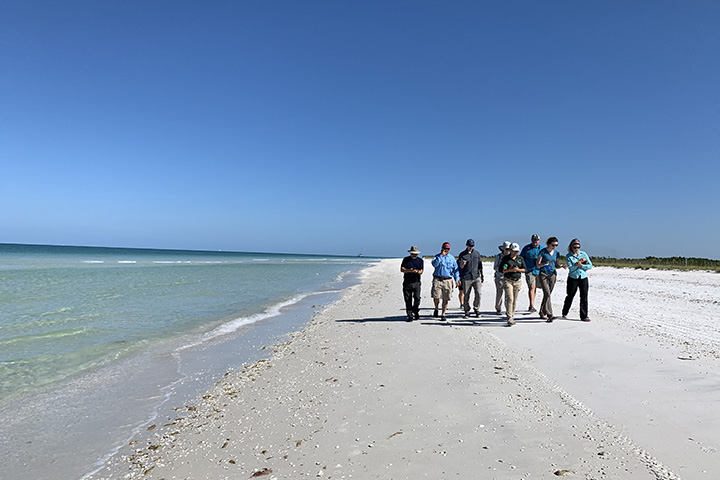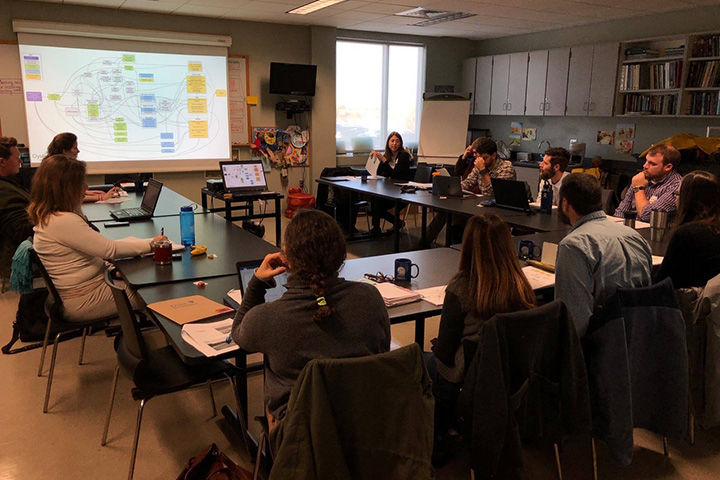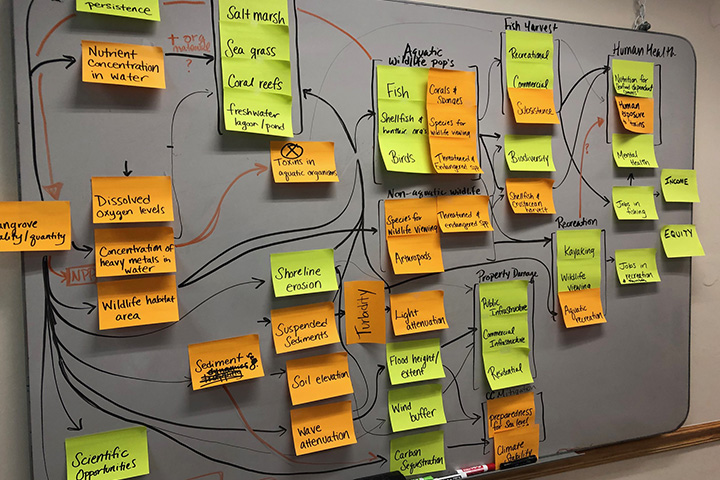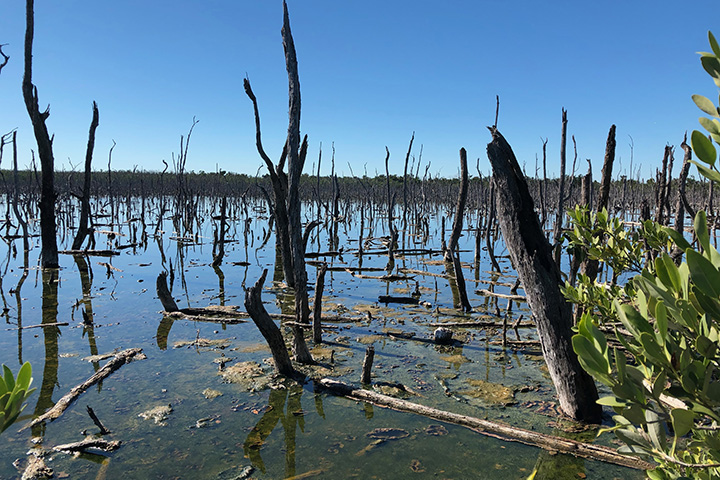
People receive numerous benefits from nature, such as water purification, coastal protection, and food production. These ecosystem services are an increasingly important consideration for coastal managers as they design management interventions to protect coastal habitat. This includes National Estuarine Research Reserve managers, who are working to better understand ecosystem services across the reserve system. However, without a standardized approach it has been difficult for coastal managers to consistently incorporate ecosystem services into programs or projects. In response to this need, researchers with Duke University’s National Ecosystem Services Partnership developed Ecosystem Services Conceptual Models (ESCMs) for estuarine habitats that diagram the way a management intervention cascades through an ecological system and provides benefits to people. The Duke team built on previous work that created an ecosystem services modeling approach for salt marsh. In partnership with the Rookery Bay and North Carolina National Estuarine Research Reserves and their stakeholders, the team led a series of workshops to produce site-specific and generalized Ecosystem Services Conceptual Models for mangrove and oyster habitat restoration in the southeast United States.
This project created a framework for coastal managers to streamline the integration of ecosystem services into their programs. Ecosystem Services Conceptual Models offer a foundation for managers to identify and anticipate ecosystem service outcomes of projects and to communicate with stakeholders and the public about these benefits. These models also provide an entry point to identify socio-economic metrics to monitor, assess, and value coastal ecosystems.
